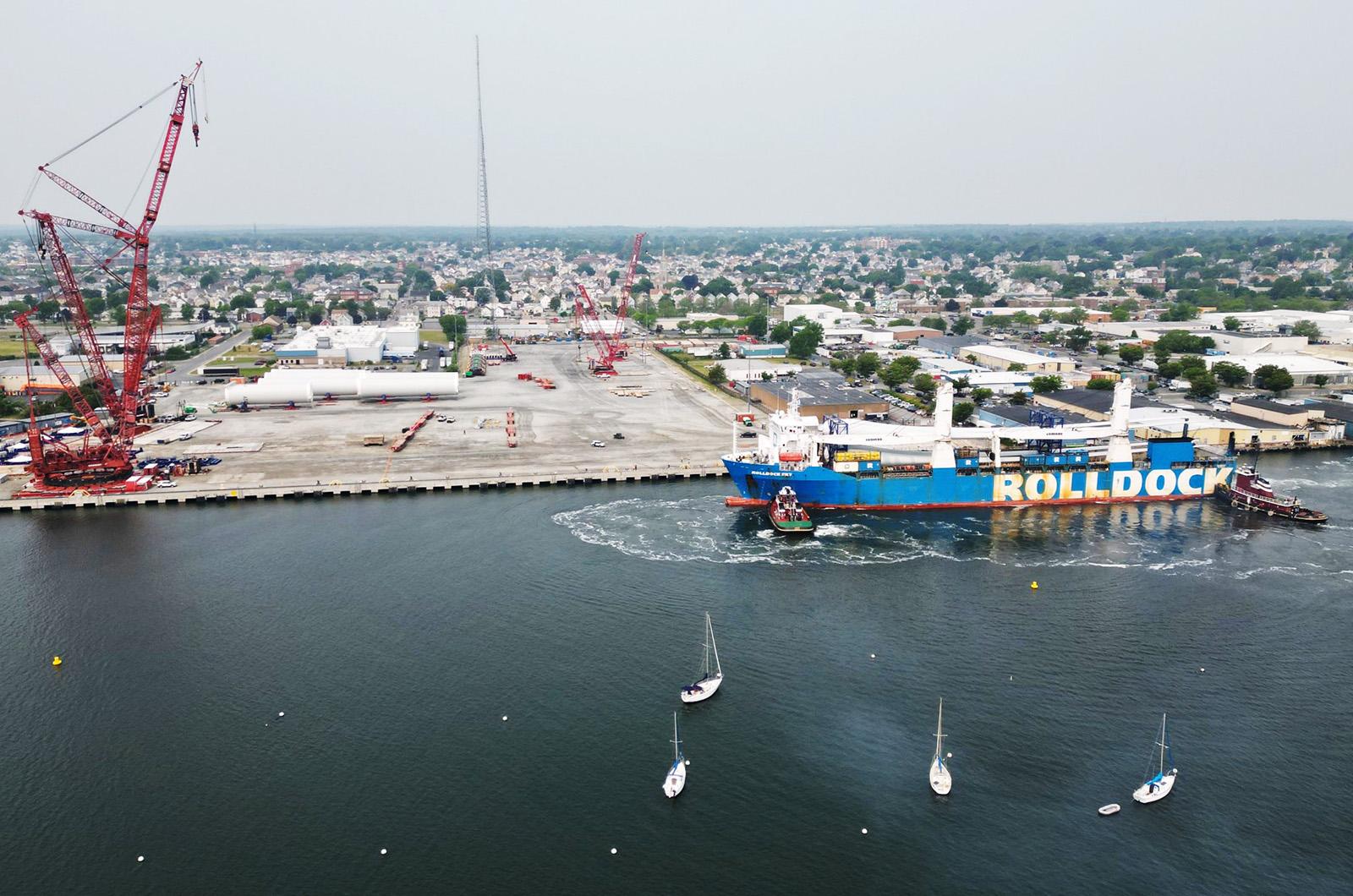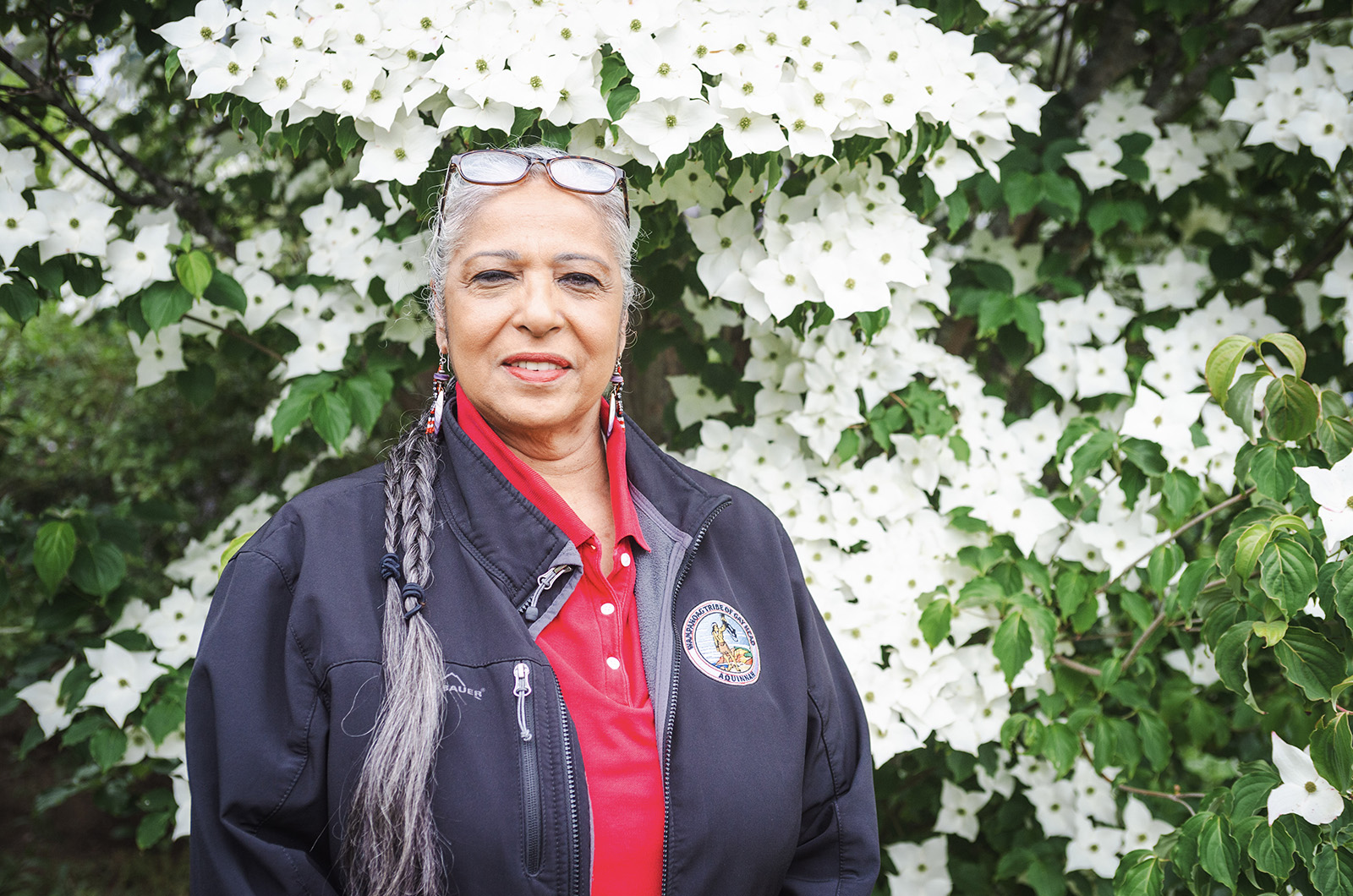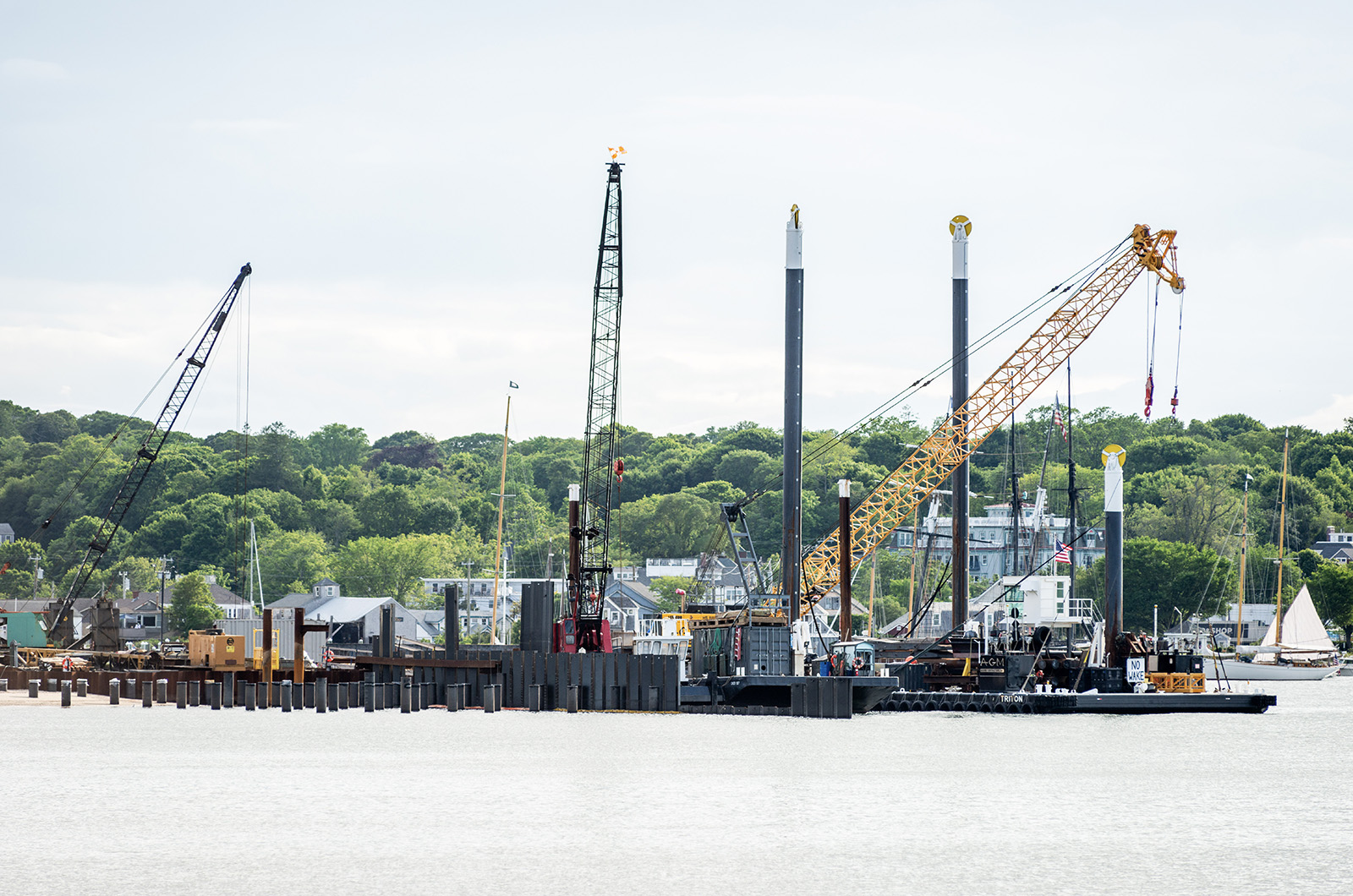From the Aquinnah Cliffs, designated a National Natural Landmark in 1965, the horizon stretches east and west offering stunning views of both sunrise and sunset.
To Cheryl Andrews-Maltais, chairwoman of the Wampanoag Tribe of Gay Head (Aquinnah), those views are sacred, one of several reasons the tribe is continuing to seek a moratorium on offshore wind development.
“We’re not against renewable energy. There’s nobody more in line with renewable energy than indigenous native peoples,” she said last week following a visit to the Island from secretary of interior Deb Haaland. “But the challenge is finding that delicate balance, where the need to find alternative renewable energy resources does not get outweighed by the long-term damages that can be created by moving too quickly in an industry that is still unknown.”
Construction of Vineyard Wind, the nation’s first commercial wind farm is already well underway, with approval from the Bureau of Ocean Energy Management, an agency that falls under Ms. Haaland’s purview.
Earlier this month, Vineyard Wind started putting in monopiles for 62 giant turbines, which will stand nearly three times the height of the Statue of Liberty with blades as long as a football field. No other project in the U.S. has come close to its size. By way of comparison, the Block Island wind turbines are 328 feet tall; the Vineyard Wind turbines will top 800 feet.
While many have touted the arrival of offshore wind to reduce dependence on fossil fuels and take advantage of New England’s strong, consistent winds, there are also concerns – even among its staunch supporters – about the scope of the effort and the potential for irreparable damage to species that live and migrate through the area.
Dr. Jessica Redfern, a senior scientist at the New England Aquarium’s Anderson Cabot Center for Ocean Life, sees offshore wind playing a critical role in the fight against climate change.
But she and other scientists at the aquarium wrote a letter to fishery regulators in December 2022 calling for stronger ocean monitoring around offshore wind projects in order to keep the critically endangered right whale and other species safe.
“I know there’s a lot of really strong feelings about [offshore wind] and concerns,” she said. “I certainly share the concerns and that’s why my focus is on monitoring.”
Last year, a scientist at the National Oceanic and Atmospheric Administration wrote in a letter that right whales are found throughout the southern New England waters in and around offshore wind energy lease areas.
“The development of offshore wind poses risks to these species, which is magnified in southern New England waters due to species abundance and distribution,” wrote Sean Hayes, a senior scientist with National Oceanic and Atmospheric Administration.
These risks could occur during construction, due to increased noise, vessel traffic, changes in habitat, and oceanographic changes that could disrupt the patterns of the whales’ food.
Mainland fishing groups have been among the loudest voices of opposition to turbines, but John Osmers, a Vineyard conch fisherman, also fears it could affect his livelihood.
He worries about the 35 miles of transmission lines connecting the turbines to the power grid on the Cape. They will run through a conch fishing area on the seabed.
“I fully support green energy and us becoming wiser in our choices for our energy supply,” he said. “They’ve been doing a lot of research, but at the same time, nothing on this large of a scale has been done before.”
As work on the turbines starts, several lawsuits have been hurled at Vineyard Wind, the first project to make it through the regulatory pipeline. But, so far, the protections put in place have stood up to the court challenges.
A federal court judge ruled in May against a group of Nantucket residents who claimed the project threatened the right whale species.
Later in May, another judge denied several fishing group’s requests to halt construction of the project over several claims, including that it would violate the Marine Mammal Protection Act and the Endangered Species Act.
Thomas Melone, a part-time Edgartown resident and the president of a solar energy company, has also filed a lawsuit against the project, flagging concerns about the safety of turbines in extreme conditions and their potential to harm endangered species. That case is ongoing.
For its part, Vineyard Wind has taken a variety of steps to address the many environmental concerns. In an interview with the Gazette earlier in June, Vineyard Wind CEO Klaus Moeller said the company has gone beyond what has been required to protect whales.
As part of its approvals, Vineyard Wind must have observers looking and listening for protected species, including right whales. Vessels in the area are also restricted to 10 knots or less from November to mid-May. Pile driving can’t occur between January and May, and there can be no pile driving at night or when animals are in the area.
Mr. Moeller said the company is doing acoustic monitoring for whale calls under the water, as well as using a special noise-reducing hammer to stifle the noise from driving monopiles into the sea bed. A bubble curtain, a contraption that uses hoses to create a sound barrier of bubbles around the construction, has also been enlisted to try and quiet the waters.
While no whale deaths have been tied to wind farm work along the east coast, local speculation kicked into high gear earlier this month when two dead humpbacks washed ashore on the Island, days after Vineyard Wind construction had started.
Mr. Moeller said no whales were seen nearby as the first monopiles went into the seafloor, and that the washed up whales have not been linked to the project. A NOAA spokesperson said that both carcasses had refloated and washed back out to sea, eliminating the opportunity to conduct necropsies and figure out the cause of death.
And though the turbines will stand taller than the Prudential building in Boston, the company says only a few of them will be marginally visible from the Island. They’ll all be painted a specific shade of light gray to try and blend in with the horizon.
Still, concerns persist. Ms. Redfern and other aquarium scientists were critical of a requirement that acoustic monitoring for marine mammal activity occur for just an hour before pile driving starts.
“Passive acoustic monitoring must be conducted for a minimum of 24 hours before pile driving begins,” Ms. Redfern and two other scientists wrote last year. “The current one-hour monitoring period does not conform to the best available scientific information…”
And she said she wanted to see more data collection around wind projects in general so researchers could see if any patterns develop.
“We need to be learning from these early developments as much as we can,” she said. “If we see something concerning, we need to document it.”









Comments (11)
Comments
Comment policy »